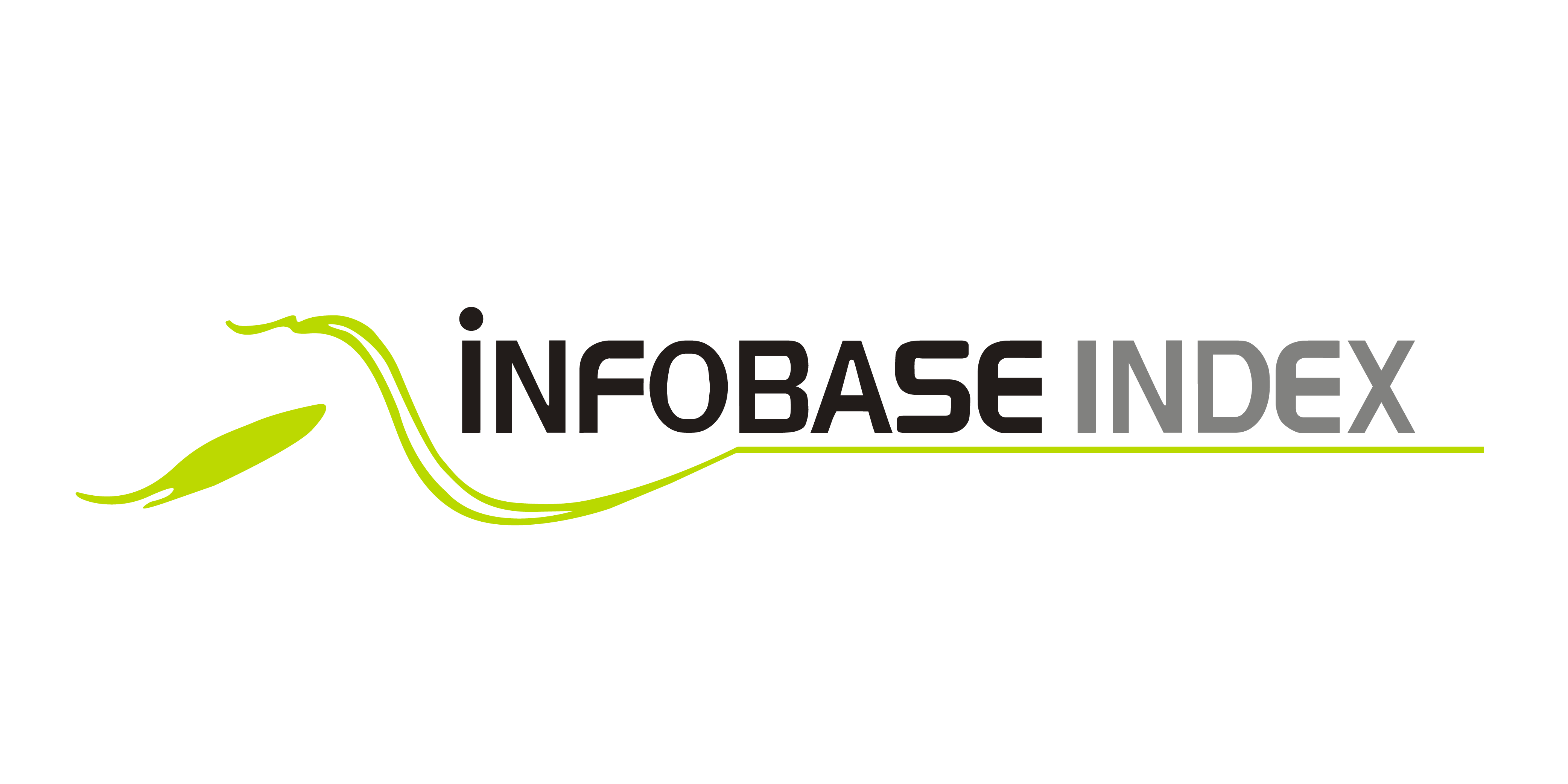ANALISIS FAKTOR-FAKTOR YANG MEMPENGARUHI NIAT BELI KONSUMEN PRODUK MAKANAN DAN MINUMAN "HALAL"DI KOTA BATAM
DOI:
https://doi.org/10.37253/jgbmr.v2i2.4329Keywords:
Subjective Norm, Religiousity, Product Quality, Attitude, Purchase IntentionAbstract
This research is to detect the factors that impact the purchase intention of "Halal" food and drink product consumer in Batam City. The Independent variables are Subjective Norm, Religiousity, Product Quality, Attitude as intervening variable and the dependent variable is Purchase intention. This research exploit consumer that look forward to buy "Halal" food and drink product ABC, Nestle, NESCAFE, and other brands. The adopted data was 330. Purposive Sampling was used as sampling method in this research, conclude there was a positive significant effect between the Subjective Norm, Religiousity, Product Quality and Attitude on Purchase Intention.
Downloads
References
Arshia Mukhtar., & Mohsin Muhammad Butt. (2012). Intention to choose halal products the role of religiosity. Journal of Islamic Marketing, 31, 1-11.
Annafik., Aldan., & Faikar. (2012). “Analisis Pengaruh Kualitas Produk, Harga dan Daya Tarik Iklan Terhadap Minat Beli Sepeda Motor Yamaha”. Diponegoro Journal of Management, 1 (2), 274-281.
Azmawani, A.R., Ebrahim, A., & Suhaimi, A.R. (2015). “Consumers and halal cosmetic products: knowledge, religiosity, attitude and intention”. Journal of Islamic Marketing, 6 (1).
Assauri., & Sofjan. (2015). ManajemenPemasaran, Jakarta: Rajawali Pers.
Awan, H. M., Siddiquei, A. N., & Haider, Z. (2015). Factors affecting Halal purchase intention-evidence from Pakistan’s Halal Food Sector. Management Research Review, 23.
Amrullah, A. R., & Agustin, S. (2016). Pengaruh Kualitas Produk, Harga, dan Citra Merek Terhadap Keputusan Pembelian Honda Beat. Jurnal Ilmu dan Riset Manajemen, 5 (7).
Anwar, I. (2015). Pengaruh Harga dan Kualitas Produk Terhadap Keputusan Pembelian. Jurnal Ilmu dan Riset Manajemen, 4 (12).
Abdulrazak., Rula M. Al., Gbadamosi., & Ayantunji. (2017). Trust, religiosity, and relationship marketing: a conceptual overview of consumer brand loyalty. Society and Business Review, 12 (3), 320-
Abdullah., Thamrin., & Francis Tantri. (2015). Manajemen Pemasaran, Jakarta: Raja Grafindo Persada.
Abdullah., & Tantri. (2014). Manajemen Pemasaran. Depok: Rajagrafindo Persada.
Bakar, A. R., Lee & C. Rungie. (2013). The effects of religious symbols in product packaging on Muslim consumer responses, Australia: Marketing J, 21,
-204.
Beneke, J., Flynn. R., Greig, T, Mukaiwa, M. (2013). The influence Of Perceived Product Quality , Relative Price And Risk On Customer Value And Willingness To Buy: A Study Of Private Label Merchandise. Journal Of Product & Brand Management. 22 (3).
Cleveland, M., Laroche, M., Hallab, R. (2013). Globalization, culture, religion, and values: comparing consumption patterns of Lebanese Muslims and Christians. Journal of Business Research,
(8), 958-967.
Durianto, Darmadi. (2011). Strategi Menaklukkan Pasar Melalui Riset Ekuitas dan Perilaku Merek. 20, Jakarta: PT. Gramedia Pustaka Utama.
Eid, R., & Gohary, H.E. (2015). The role of Islamic religiosity on the relationship between perceived value and tourist satisfaction. Tourism Manage, 46, 477-
Fabrigar, L. R., Porter, R. D., & Norris, M. E. (2010). Some things you should know about structual equation modeling but never thought to ask. Journal of Consumer Psychology, 20 (2), 221-225.
Farrag, D. A., & Hassan, M. (2015). The influence of Religiosity on Egyptian Muslim Youth’s Attitude Towards Fashion. Journal of Islamic Marketing. 6 (1), 95-108.
Ghozali., & Imam. (2011). Structual Equation Modeling Metode Alternatif Dengan Partial Least Square (PLS), 3, Semarang: Badan Penerbit Universitas Diponegoro.
Golnaz, R., Zainalabidin, M., Mad Nasir, S., & Eddie Chiew. (2010). Non-Muslims’ awareness of halal principles and related food products in Malaysia. International Food Research Journal, 17, 667-670.
Ghozali., Imam., & Hengky Latan. (2012). Partial Least Square “Konsep Teknik dan Aplikasi” SmartPLS 2.0 M3, Semarang: Badan Penerbit Universitas Diponegoro.
Greenslade, J. H., McKimmie, B.M., Smith, J.R., Terry, D.J., & White, K.M. (2009). Social influence in the theory of planned behavior: the role of descriptive, injunctive, and ingroup norms. British Journal of Social Psychology, 48 (1), 135-
Herlina, S. (2009). Pengaruh Sikap, Norma Subyektif, Dan Kontrol Keperilakuan Terhadap Niat Membeli Handphone Merek Nokia. 3, 38-59.
Hasan,, & Ali. (2016). Marketing, Jakarta: Medpress.
Hair, J. F., Ringle, C. M., & Sarstedt, M. (2011). PLS-SEM: indeed a silver bullet. Journal of Marketing Theory and Practice, 19 (2), 139-151.
Hair, J. F., et. al. (2010). Multivariate data analysis, 7, New Jersey: Pearson Education Inc.
Haque, A., Sarwar, A., Yasmin, F., Tarofder, A.K., & Hossain, M.A. (2015). “Non-Muslim consumers” perception toward purchasing halal food products in Malaysia. Journal of Islamic Marketing, 6 (1), 133-147.
Han, H., & Ryu, K. (2012). The theory of repurchase decision-making (TRD): Identifying the critical factors in the post- purchase decision-making process. Int. J. Hosp. Manage, 31, 786-797.
Hyun, Joo Lee., & Zee, Sun Yun. (2015). Consumer’s perceptions of organic food attributes and cognitive and affective attitudes as determinants of their purchase intentions toward organic food. Food Quality and Preference, 39, 259-267.
Jamal, A., & Sharifuddin, J. (2015). Perceived value and perceived usefulness of halal labeling: The role of religion and culture. J. Bus. Res, 68, 933-941.
Jimenez Parra, B., Rubio, S., & Molina, M.A.V. (2014). Key drivers in the behavior of potential consumers of remanufactured products: A study on laptops in Spain. J Cleaner Prod, 85, 488-
Jaafar, S.N., Lalp, P.E., & Mohammed, M. (2012). Consumers Perceptions, Attitudes, and Purchase Intention towards Private Label Food Products in Malaysia. Asian Journal of Business and Management Sciences, 2 (8), 73-90.
Kazmi, A., & Mehmood, Q.S. (2016). The effect of electronic word of mouth communication and brand image on purchase intentions: A case of consumer electronics in Haripur. Management Science Letters, 6, 499-508.
Kotler., Philip., & Gary Armstrong. (2012). Principles of Marketing. New Jersey: Pearson Education Inc.
Kotler., Philip., & Kelvin Lane Keller. (2009). Manajemen Pemasaran, 1, Jakarta: Erlangga.
Kotler, P.A. (2012). Prinsip-Prinsip Pemasaran, Jakarta: Erlangga.
Kotler., Philip., & Kevin Lane Keller. (2012). Marketing Management, 14, United Stated of America: Pearson Education.
Kim, E., Ham, S., Yang, I.S., & Choi, J.G. (2013). The roles of attitude, subjective norm and perceived behavioral control in the formation of consumer’s behavioral intentions to read menu labels in the restaurant industry. Intl. J. Hospitality Manage, 35, 203-213.
Khan, A., & Azam, M.K. (2016). Factors affecting halal product purchase intention in India: preliminary investigation. The IUP Journal of Marketing Management, 15, (1).
Kuang Chi, H., Huery, R.Y., & Ya, Ting, Y. (2009). The impact of Brand Awareness on Consumer Purchase Intention: The Mediating Effect of Perceived Quality and Brand Loyalty. The Journal of International Management Studies, 4 (1), 135-144.
Liang, A. R.D., & Lim, W.M. (2011). Exploring the online buying behavior of speciality food shoppers. Intl. J. Hospitality Manage, 30, 855-865.
Lada, S., Tanakinjal, G., & Amin, H. (2009). “Predicting intention to choose halal products using theory of reasoned action. Int. J. Islam. Middle East. Finance. Manage, 2 (1), 66-76.
Macchia, S.L., Louis, W.R., Saeri, K.A., Smith, J.R., & Ogilvie, C. (2013). Predicting facebook users online privacy protection: risk, trust, norm focus theory, and theory of planned behavior.
Moerdiyanto. (2010). Pengertian Kinerja Perusahaan Menurut Para Ahli.
Martins, C.G., Berhens, J.H., Montes Villanueva, N.D., Franco, B.D.G.M., & Landgraf, M. (2012). Acceptance and purchase intention of irradiated foods in Brazil: Effect of positive information. CENTRUM Catolica’s Working Paper Series.
Marwanto., & Aris. (2015). Marketing sukses, Yogyakarta: Kobis.
Munir, M. (2012). Pengaruh Sikap Konsumen Dan Norma Subyektif Terhadap Minat Beli Produk Sepeda Motor Yamaha “Scorpio” Di Surabaya. Jurnal Cendekia, 1.
Mas’ud., & Muchlis, H. (2012). Pengaruh Sikap, Norma-Norma Subyektif dan Kontrol Perilaku Yang Dipersepsikan Nasabah Bank Terhadap Keinginan Untuk Menggunakan Automatic Teller Machine (Atm) Bank Bca di Kota Malang.
Mustari. (2014). Nilai Karakter Refleksi Untuk Pendidikan. Yogyakarta: Raja Grafindo Persada.
Mukhtar, A., & Mohsin Butt, M. (2012). Intention to choose halal products: the role of religiosity. Journal of Islamic Marketing, 3 (2), 108-120.
Notoatmodjo, S. (2010). Metode Penelitian Kesehatan. Jakarta: Rineka Cipta.
Norazah, M. S., & Abang Sulaiman, A.S. (2016). Does Halal Image Strengthen Consumer Intention to Patronize Halal Stores? Some Insights from Malaysia. Journal of Islamic Marketing, 7 (1), 120-
Ozguven, N. (2012). Organic foods motivation factors for consumers. Procedia-Social and Behavioural Sciences, 62, 661-665.
Oentoro, D. (2012). Manajemen Pemasaran Modern. Yogyakarta: Laksbang Pressindo.
Pelau, C. (2011). Analysis of consumer behavior for different product groups. Management & Marketing, 6, 101-114.
Peter, P., & Olson, J.C. (2010). Consumer Behavior and Marketing Strategy. McGraw-Hill. New York: ISBN-13:
, 554.
Pool, J.K., Najafabadi, A.H.J. (2015). Developing a model to analyze the effects of brand constructs on word of mouth and purchase intention for halal brands. Journal of Global Business Advancement,
(3), 342.
Quah, S.H., & Tan, A.K. (2009). Consumer purchase decisions of organic food products: An ethnic analysis. Journal of International Consumer Marketing, 22 (1), 45-58.
Rehman, A., & Shahbaz Shabbir, M. (2010). The relationship between religiosity and new product adoption. Journal of Islamic Marketing. 1 (1), 63-69.
Scalco, A., Noventa, S., Sartori, R., & Ceschi, A. (2017). Predicting organic food consumption: A meta-analytic structual equation model based on the theory of planned behavior. Appetite, 112, 235-248.
Shah Alam, S., & Mohamed Sayuti, N. (2011). Applying the theory of planned behavior (TPB) in halal food purchasing. International Journal of Commerce and Management, 21 (1), 8-20.
Shah Alam, S., Mohd, R. & Hisham, B. (2011). “is religiosity an important determinant on Muslim consumer behaviour in Malaysia?”. Journal of Islamic Marketing, 2 (1), 83-96.
Souiden, N., & Rani, M. (2015). Article information: Consumer attitudes and purchase intentions toward the Islamic banks: the influence of religiosity. International Journal of Bank Marketing,
(2), 143.
Shukor, S. A., & Jamal, A. (2013). Developing Scales for Measuring Religiosity in the Context of Consumer Research.
Son, H., Park, Y., Kim, C., & Chou, J.S. (2012). Toward an understanding of construction professional’s acceptance of mobile computing devices in South Korea: an extension of the technology acceptance model. Autom. Constr, 28, 82-
Sekaran, Uma., & Rouger, Bougie. (2013). Research Methods for Business. 4 (2), Jakarta: Wiley.
Triwiyanto. (2014). Pengantar Pendidikan. Yogyakarta: Bumi Aksara.
Vahdati, H., & Nejad, S. M. (2016). Brand personality toward customer purchase intention: the intermediate role of electronic word of mouth and brand equity. Asian Academy of Management Journal, 21 (2), 1-26.
Ya-Hui, Wang., & Cing-Fen, Tsai. (2014). The relationship Between Brand Image and Purchase Intentions: Evidence from Awards Winning Mutual Funds. The International Journal of Business and Finance Research, 8 (2), 27-40.
Wilson, J.A.J., & Liu, J. (2011). The challenges of Islamic branding: navigating emotions and halal. Journal of Islamic Marketing, 2 (1), 28-42.
Yang, K., & Jolly, L.D. (2009). “The effects of consumer perceived value and subjective norm on mobile data service adaption between American and Korean consumers”, Journal of Retailing and Consumer Services, 16 (6), 502-508.
Yesenia., & Siregar, E. H. (2014). Pengaruh Kualitas Layanan dan Produk terhadap Kepuasan serta Loyalitas Pelanggan KFC di Tangerang Selatan. Jurnal Manajemen dan Organisasi, 5 (3).
Zeeshan, Z. (2013). The impact of mobile service attributes on males’ and females’ purchase decision. Management & Marketing Challenges for the Knowledge Society, 8 (4), 669-682.
Zhou, X., Lynch, Jr, J.G., & Chen Q. (2010). Reconsidering Baron and Kenny: Myths and Truths about Mediation Analysis. Journal of Consumer Research. 37, 197-206.
Downloads
Published
Issue
Section
License
Copyright (c) 2020 Journal of Global Business and Management Review

This work is licensed under a Creative Commons Attribution-NonCommercial-ShareAlike 4.0 International License.















